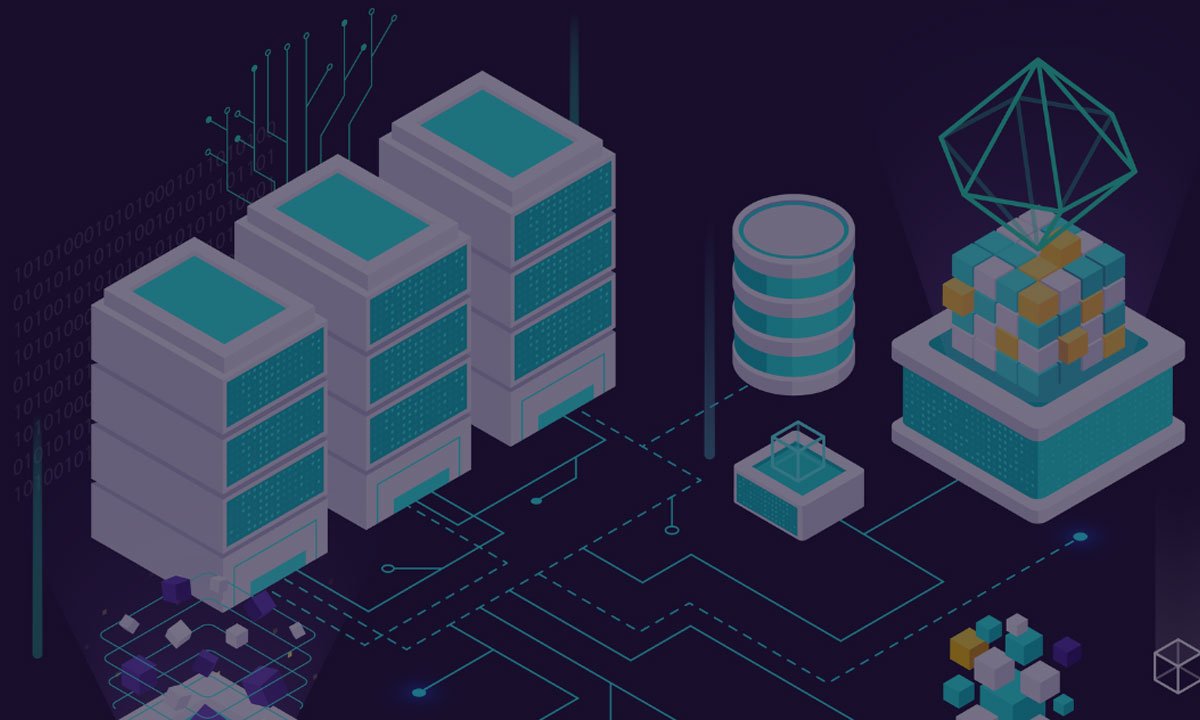Tech
How Microservices Architecture Can Transform Your Software Scalability
Published
1 year agoon
By
Admin
We are witnessing an unexpected shift in software development with some advanced technologies. Traditional approaches are becoming irrelevant because businesses demand more scalable and flexible software solutions to meet changing consumer demands and handle increasing loads.
These require some out-of-the-box software development approaches, such as Microservices architecture. This approach is based on the concept that breaking down applications into smaller and independent services can help businesses achieve flexibility, reliability, and efficiency.
In simple words, microservices-based architecture is a modern approach to software development; it helps design software or applications as a collection of small and independent services. That means it breaks down complex software into small and independent services. Each of these services focuses on completing a specific task, and ultimately, they work together to form a complete application. Thus, microservice-based architecture can help you build a cost-effective, flexible, and scalable software solution for your business.
IBM’s report “Microservices in Enterprises 2021” highlights that Microservices implementors enjoy 30% better customer satisfaction/ retention, 29% better security of customer data, and 28% improved application performance.
Additionally, they have improved resource allocation and employee productivity by 26% and 27%, respectively. These data show why microservices architecture is a game-changing approach to software development and can unlock many new opportunities for your business growth.
We don’t want you to stay behind in utilizing this revolutionary approach. That’s what we are going to understand: its benefits and challenges. Along with that, we will also see how software consulting can help you in leveraging the power of microservice architecture.
Benefits of Microservices Architecture
It has many benefits that combine to increase the flexibility and scalability of software solutions. Let’s look at some of the advantages.
Independent Scaling With Better Resource Utilization
You might have experienced that in the traditional software development approach, you have to scale the whole software, even if it needs to be one part. Or if one part needs more resources, you can’t focus on that; you have to scale every part, which means lots of waste of resources, right? Now, you can easily solve this problem with microservice architecture as it allows you to scale a particular part that needs it. For example, if user login services get a lot of traffic, you can only increase its resources without changing anything else.
Better Fault Isolation
We have witnessed that in traditional monolithic architecture, if one part of the application fails, it can bring down the entire system. But now, with microservices architecture, you can operate each service independently. So, you can do better fault isolation and ensure that failure in one service doesn’t affect the entire application. This fault isolation enhances the reliability and stability of the system.
Flexibility in Technical Stack
The microservice-based architecture allows your dedicated software development team to use different programming languages and technical stacks for different services. With this flexibility, developers can use the most suitable technology for each service, which ultimately helps to enhance the overall performance of software or applications. This approach also supports innovation and efficient integration with legacy systems.
Fast Development and Deployment
One of the best advantages of microservice is that it can speed up the development and deployment process. Different teams or developers can work on different services simultaneously as it allows operating services independently. This reduces confusion in the team and helps in fast development. Each service can be updated and released independently when it comes to deployment. Additionally, this approach reduces the risk of large-scale failures.
Easier Testing and Debugging
The main function of microservice-based architecture is to break down an application into independent services. This helps developers test software better. Every service or function can be tested individually, making it easy to identify and resolve issues. Additionally, with smaller codebases and clear service boundaries, developers can easily understand and manage codes. Thus, it can collectively improve the effectiveness of testing and debugging processes.
Many big companies like Amazon, Uber, Netflix, Etsy, Spotify, and others have successfully adopted this approach to enhance the effectiveness of their software development systems. If you also want to leverage these advantages. In that case, you can connect with the best software development company that can harness the power of microservices architecture to build a flexible, scalable, and futuristic software solution tailored to your business needs.
Challenges of Microservice Architecture
As it is an advanced, improving approach, you might face different challenges while implementing this in your business. So, let’s be aware of the main challenges of microservices architecture in software development.
Increased Complexity
It’s very obvious that managing different services simultaneously can be more complex than managing the entire monolithic architecture. Because each service has its own codebase, dependencies, and configuration, this distributed nature makes it difficult for developers to manage and understand systems. Sometimes, developers need additional tools and infrastructure for better management.
Difficulty in Service Coordination and Communication
Service coordination in microservices is a bit challenging because services need to communicate over a network, which can cause delays and failures. Additionally, developers need the best communication in the team to manage data across services, keep track of changing services, and ensure everything works together smoothly. And that is really a difficult task.
Security and Control
In a microservices architecture, the number of networked services increases, which expands the potential attack surface and leads to security and control difficulties in the entire system. Because of this, managing authentication, protecting data, and securing APIs across distributed databases becomes difficult.
Data Consistency
In monolithic architecture, data is used to being stored in a single database, whereas microservices-based architecture often uses separate databases for each service. This decentralized approach can lead to inconsistencies when multiple services need to access or update the same data simultaneously.
No doubt there are a few crucial challenges in adopting microservices-based architecture, but nothing is impossible with the proper guidance of experts. You can utilize software consulting services to understand microservices architecture better.
The expert consultants can guide you through the entire process and reduce the chance of failure while migrating from a monolithic architecture to decentralized services. If you are still wondering whether software consulting will be worth it or not, then let’s discuss how software consulting service providers can help you leverage the advantages of microservice architecture.
How can Software Consulting Services be Useful in Leveraging Microservices Architecture?
Implementing microservices-based architecture requires detailed research and proper planning. That’s why you need expert consultation to ensure this implementation’s success. Let’s see how software consulting companies can help.
Expert Guidance
Microservice consulting experts are trained to identify the business’s unique needs and set up scalable microservices software solutions. They can advise you on whether you should go for microservice architecture or not. Additionally, they can provide expert advice to your developers on how to break down a large application into smaller services in such a way that it can ensure a smooth migration to microservices.
Efficient Technology Selection
As we already discussed, developers can independently use different programming languages and technologies to develop different services. In this case, consultants can help you to identify the most suitable technologies according to the specific requirements. This can avoid costly trial-and-error methods and speed up the implementation process.
Enhancing Security
Every business has major concerns regarding security, which may stop them from adopting advanced approaches like microservice architecture. But you don’t need to worry about this because microservices software consults can help you establish robust security measures tailored to microservices. They will help you implement best security practices to ensure sensitive data protection.
Training and Skill Development
Many software consulting companies can help your development teams stay updated with the latest trends. With their help, you can organize training sessions or workshops on microservice-based architecture to empower your internal teams. This will help you in fostering a culture of continuous learning and adoption of new technologies in your organization.
Conclusion
The aim of this article was to make microservices architecture easy to understand so you can also use it for your business growth, and I hope this served its purpose.
Microservice-based architecture offers numerous benefits, but it also has challenges that can stop you from leveraging its potential. This is where software consulting services step in to help you overcome these hurdles, as you have already seen its benefits. So now you know what microservices architecture is, how it is useful to your software system, and how to overcome its challenges.
Then, what are you waiting for? Consult the right experts, choose the best developers, and make your software future-ready.
Author Name: Olivia Medison
Author Bio: Olivia Medison is a technology expert who specializes in advanced software development approaches, such as microservices architecture. She helps businesses achieve scalability through cutting-edge solutions.


What Is Hicozijerzu? The Cool Concept Everyone’s Talking About

What Is Zixyurevay? Everything You Need to Know in Simple Words

What You Should Know About the Best Website Development Services Before Hiring

Hulu Not Working on Your TV? Top Solutions to Try Today

Home Hacks vs. Clinic Care: Why You Should Never Try to Remove Your Own Skin Tag

Efficient Comfort Solutions with Ducted Gas Heating Systems

Global Sports Viewing Trends 2025—Real-Time Data Transforming the Spectator Experience

The Skills That Separate Successful Hunters from Everyone Else

The Role of Dua and Quran Recitation during Umrah

Maximising Home Energy: The Benefits of Solar Panel Battery Storage for UK Homeowners

Revolutionizing Healthcare: The Emergence of AI-Driven Analytics

Carol Kirkwood’s Journey: Her Real Age, Husband, Career, and More

How Machine Learning and AI are Redefining the Future?

Aliza Barber: Meet Lance Barber’s Wife, Age, Life, Profile, Career and Net Worth

Evelyn Melendez: Jordan Knight’s Wife Bio, Marriage, Family, Career and Net Worth

Ilan Tobianah Biography: Family, Marriage, Lifestyle, Career and Net Worth

King Von’s Autopsy Report: The Truth Behind the Tragic Death

Who was Alice Marrow? Everything to Know About Ice-T’s and His Mother

Body Positivity and Bodycon: Embrace Your Shape with Homecoming Dresses

Meet Otelia Cox: The Supportive Wife of Tony Cox – A True Fairy Tale Romance

What Is Hicozijerzu? The Cool Concept Everyone’s Talking About

What Is Zixyurevay? Everything You Need to Know in Simple Words

What You Should Know About the Best Website Development Services Before Hiring

Hulu Not Working on Your TV? Top Solutions to Try Today

Home Hacks vs. Clinic Care: Why You Should Never Try to Remove Your Own Skin Tag

Efficient Comfort Solutions with Ducted Gas Heating Systems

Global Sports Viewing Trends 2025—Real-Time Data Transforming the Spectator Experience

The Skills That Separate Successful Hunters from Everyone Else

The Role of Dua and Quran Recitation during Umrah

Maximising Home Energy: The Benefits of Solar Panel Battery Storage for UK Homeowners
Category
Trending
-

 Health2 years ago
Health2 years agoRevolutionizing Healthcare: The Emergence of AI-Driven Analytics
-

 News4 months ago
News4 months agoCarol Kirkwood’s Journey: Her Real Age, Husband, Career, and More
-

 Technology2 years ago
Technology2 years agoHow Machine Learning and AI are Redefining the Future?
-

 Celebrity2 years ago
Celebrity2 years agoAliza Barber: Meet Lance Barber’s Wife, Age, Life, Profile, Career and Net Worth


